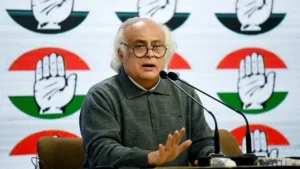Pakistan’s airstrikes on suspected Pakistani Taliban (Tehreek-e-Taliban Pakistan, or TTP) hideouts in Afghanistan on Tuesday have drawn sharp criticism and heightened tensions in the region. The strikes reportedly dismantled a training facility and killed several insurgents, but civilian casualties have also been reported, exacerbating an already delicate relationship between Islamabad and Kabul.
Taliban Denounces Attacks
Afghanistan has denounced the attacks, calling them a violation of their sovereignty. In response, the group has vowed retaliation, marking a dangerous escalation in the ongoing conflict. As recovery efforts continue, the strikes underline the fragility of Pakistan-Afghanistan relations, already strained by the activities of militant groups in the border regions.
The airstrikes were carried out against suspected TTP hideouts following a surge in attacks on Pakistani forces. Islamabad has accused the Afghan Taliban of providing sanctuary to TTP militants. According to a report by Khaama Press, these operations were a direct response to the rising threat posed by the TTP, which has increased its cross-border activities in recent months.
Understanding the Tehreek-e-Taliban Pakistan
The Pakistani Taliban, which has roots in Pakistan but operates from Afghanistan, has been a persistent security challenge for Islamabad.
The TTP was established in 2007 as an umbrella organization uniting various hardline Sunni Islamist factions operating independently in Pakistan. While it pledges allegiance to the Afghan Taliban, it functions independently and focuses on imposing Islamic law in Pakistan.
Over the years, the TTP has carried out some of the most brutal attacks in Pakistan, including targeting churches, schools, and women’s education advocates. The 2012 shooting of Malala Yousafzai, who survived and later won the Nobel Peace Prize for her advocacy for girls’ education, remains one of their most infamous acts.
Military Action Against the Tehreek-e-Taliban Pakistan
Between 2014 and 2016, Pakistan conducted extensive military operations in the tribal regions, effectively dismantling the TTP’s network and killing many of its leaders. This pushed the group’s remnants into Afghanistan, where they regrouped and found new momentum after the Afghan Taliban’s victory over U.S.-backed forces in 2021.
Pakistan’s attempt to negotiate peace with the TTP, mediated by the Afghan Taliban, led to a temporary ceasefire. However, these talks collapsed, and the TTP resumed attacks on Pakistani soil late last year. “The peace talks were a gamble that did not pay off,” said a regional analyst. “The TTP used the lull to strengthen its position.”
Rising Tensions Between Pakistan and Afghanistan
The increase in TTP attacks has further strained relations between Islamabad and Kabul. Pakistan alleges that the TTP leadership operates with impunity in Afghanistan, a claim the Taliban administration has consistently denied. “There are no sanctuaries for the TTP in Afghanistan,” said a Taliban spokesperson, countering Pakistan’s accusations.
These developments also complicate efforts to combat the other major militant threat in the region, the Islamic State, which primarily targets Afghanistan but poses a broader regional risk.
Also Read: Pakistan Conducts Airstrikes Inside Afghanistan: All You Need To Know























